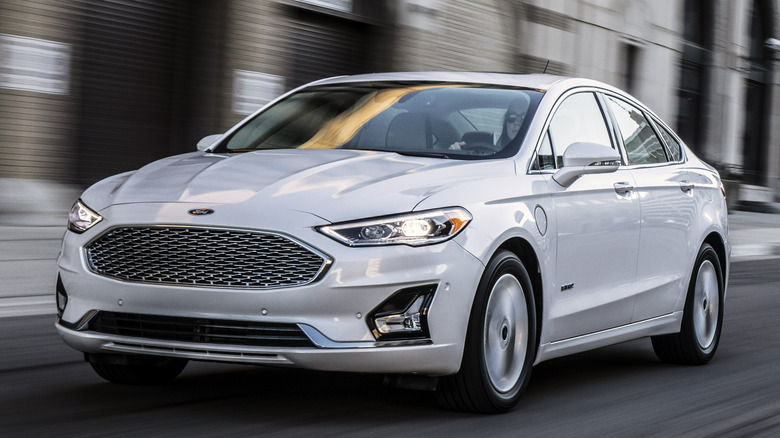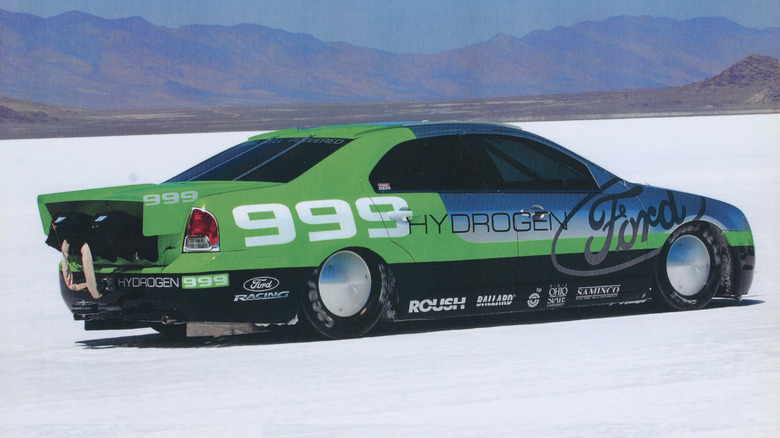The Reason Why Ford Discontinued The Fusion
When Ford debuted its Fusion for the 2006 model year, it faced stiff competition from class leaders like the Honda Accord and Toyota Camry. Fortunately, the Fusion was well equipped for the fray with a platform originally developed in partnership with Mazda. The Fusion was also the first Ford to display the new face of the company at that time — a three-bar grill — as well as an automatic transmission with six-speeds rather than four or five like other cars.
In a twist that nobody saw coming for the mundane midsize sedan, Ford campaigned a hydrogen fuel-cell-powered Fusion at the hallowed Bonneville Salt Flats, the famous stomping grounds of speed junkies such as Craig Breedlove. There, the Fusion 999 set a speed record of 207 MPH for a production-based, hydrogen-powered vehicle.
Even though the hydrogen-powered Fusion never progressed to the mainstream market, Ford did deploy a battery electric hybrid Fusion in 2010, which Kelley Blue Book put on its list of "Top 10 Green Cars," outranking the Toyota Camry Hybrid.
The Fusion was completely redesigned for its second generation in 2013 with fresh new sheet metal, trim levels, and powertrains to eventually include a sporty twin-turbocharged V6 that made 325 horsepower, as well as plug-in hybrid variant. In 2020, Ford unceremoniously announced that it was killing the Fusion in spite of its versatility and relatively good reviews in the marketplace. The reason why was simple: Buyer preference was shifting away from sedans and more toward trucks and SUVs.
The Fusion is a good value in the resale market
By the time of the Fusion's discontinuation, it was hardly a surprise to anyone that the midsize sedan was axed since its siblings — the full size Taurus and compact Fiesta — were already removed from Ford's lineup. While it's easy to accuse Ford of orphaning passenger cars in lieu of an increased budgets for trucks like its then-upcoming Bronco revival, the Fusion's annual sales were indeed dropping.
The model went from its peak of approximately 306,860 units in 2014 to only about 173,600 units in 2018, and down to 110,665 in 2019. Also, since new cars are typically redesigned every 5-7 years, the Fusion was due for a costly clean-sheet rework to remain competitive, so the timing was optimal to pull the plug.
Additionally, some publications like consumer insights provider J.D. Power noted that the Fusion was pricey in its later years, with some models cresting $40,000, which is a sizable chunk of change for a plain vanilla sedan that could easily be mistaken for a rental car.
Nowadays, the Fusion represent a good value in the used car market if you can resist the siren's song of a crossover SUV. The vehicle purchasing site CarEdge (via MotorBiscuit) reports that the Fusion will lose 56% of its value after just five years. The prospects for the hybrid model are even more glum, or more an opportunity depending on your point of view, with a 58% loss of value after five years.

